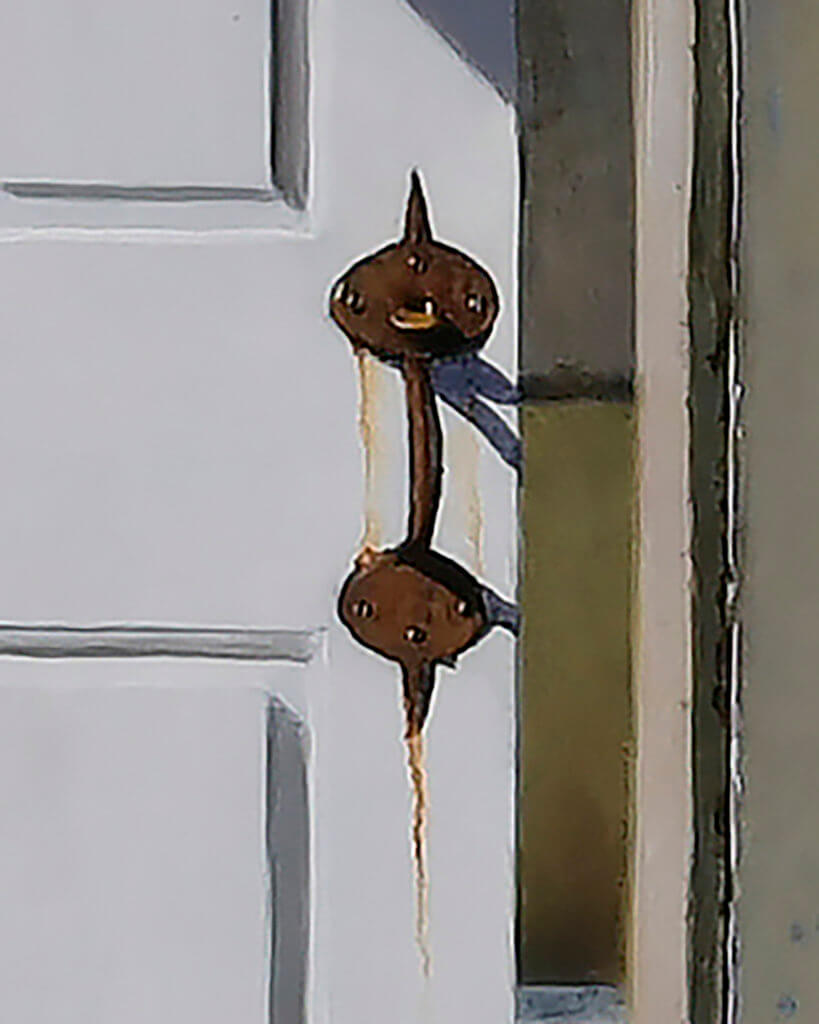New Rust – 24 x 37
This is the last painting in the Hancock Mitchell House series, and for me it pulls all seven of them together. My working title for this originally was Advent because all those openings and passages reminded me of an advent calendar.
As if you could open each one and step through and back in time and pick a different century in which to explore.
I personally imagine doing that as the woodworker I used to be. With hatchet in hand and shaving horse at the ready, I’d love to work alongside all of the builders of this house. Learning from the masters who cut the massive timbers and swung the hewing axes. Listening to stories of sea voyages as they wove the wattles and mixed the daub.
I can almost feel the ocean breeze lift across the grassy plain, come to softly cool the sweat on my shoulders and back as we share in the splitting of lath under a steamy solstice summer sun.
Above the cry of a pond diving gull, I can hear the rhythmic swish…pull…swish of the planes as they fashion the moulded edges along the wide cabinet boards.
Across the wind swept meadow, along the road from the beach, I can see a cloud of dust rising as a team of draft horses pulls a sled of ship-wrecked planks, washed ashore and gleaned to live now… a landlubbers life of pantry shelf, mantelpiece or sill.
And from just over the treetops, on the next island farm, catching a ride on the early morning breeze, the remnant of woodsmoke drifts from the forge where its fire burns and builds to harden her irons.
Away and alas…
here in this century
I have put down my hatchet
to pick up a brush…and quill…
From the depths of her shadows
in the company of her years
opens a new whitened door
holding fast and proud
to its first ever latch
poised now to witness
this next chapter of life
for a quiet old house
on a wild island plain
and so it begins
with a trickling thin line
reddening apace
of modest…new rust.











